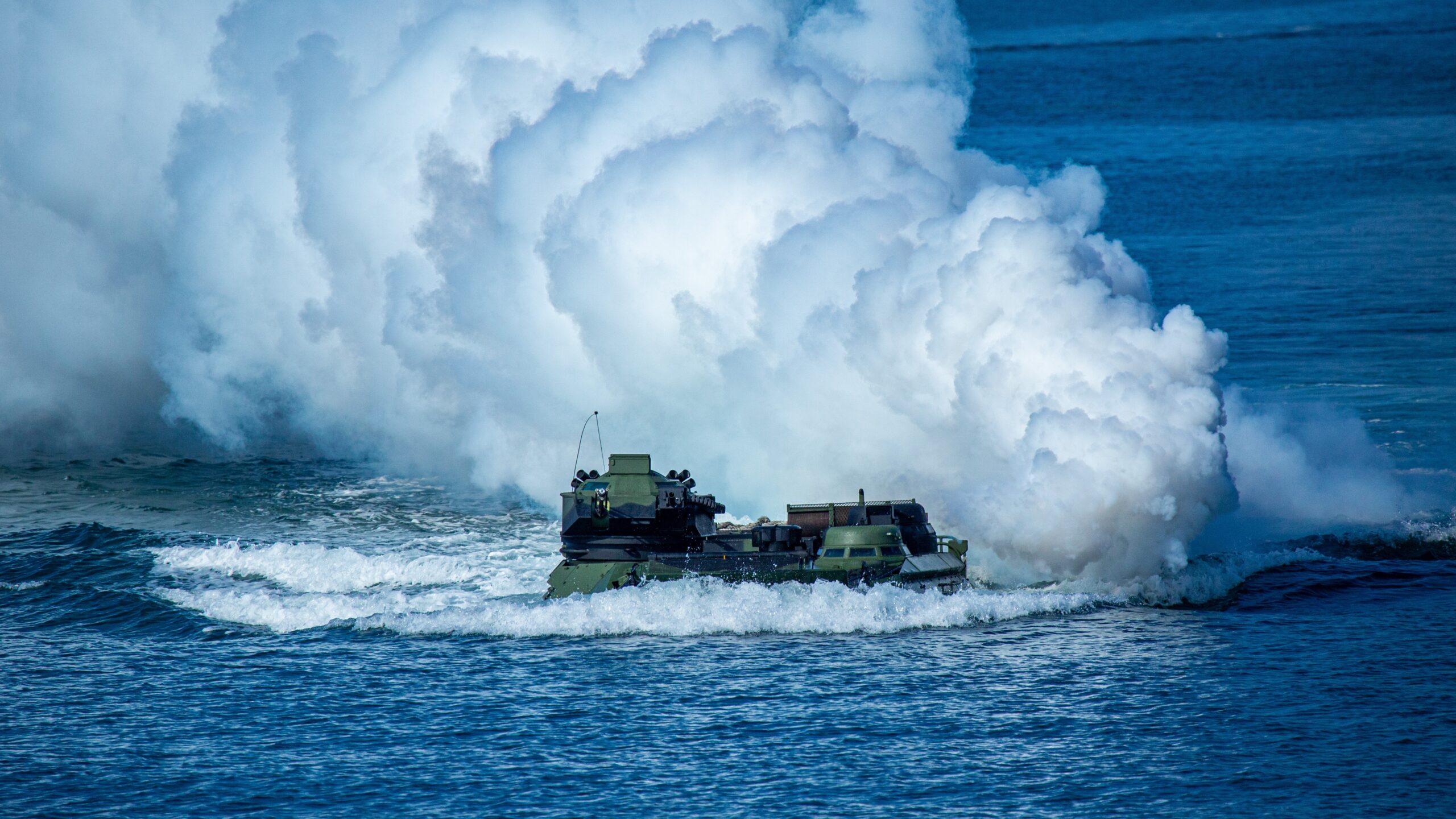
Taiwan’s AAV7 amphibious assault vehicle maneuvers across the sea during the Han Kuang military exercise on July 28, 2022, in Pingtung, Taiwan. (Photo by Annabelle Chih/Getty Images)
WASHINGTON — The Biden administration is working on a multi-pronged approach to speed up weapon deliveries to Taiwan, which might include bumping up their spot in the production queues, according to administration officials’ testimony this week. But some lawmakers contend that more needs to be done to break through the logjam and help the island deter or fend off a Chinese military cross-straight invasion.
“After seeing Taiwan’s defense capabilities firsthand, I can say that they’re not where they need to be,” Chairman of the House Foreign Affairs Committee Rep. Michael McCaul said at a Wednesday hearing on foreign military sales. “Weapon sales I signed off on four years ago, as the ranking member, have yet to make it to Taiwan. [Taiwanese] President Tsai [Ing-wen] asked me, ‘Where are my weapons? I paid for them.'”
Focus on Taiwan comes as the US eyes the 2027 timeframe, when Chinese President Xi Jinping said he wants his forces to at least have the capability in place for a successful military incursion.
To press the Biden administration, McCaul and other GOP members have been touting a list of 22 US weapons bound for Taiwan along with their corresponding Congressional “notification” dates that range from July 2019 through March 2023. That list includes: Stinger Missiles and F-16 Block 70 fighter jets with 2019 dates; High Mobility Artillery Rocket Systems (HIMARS) and MQ-9B Sky Guardian UAS with 2020 dates; and Harpoon Block II missile and AIM-9X Sidewinder missiles in 2022. GOP lawmakers said this week that these weapons will not be delivered until sometime between 2025 and 2029, which they say is an unacceptable delay given the looming 2027 date.
Testifying at the hearing, State Department’s Assistant Secretary Bureau of Political-Military Affairs Jessica Lewis said that broadly she agreed with the McCaul’s concerns.
“We agree that there is urgency to make sure that Taiwan is prepared as part of deterrence to keep China from moving forward,” she said, before explaining why weapons transfers can take so long to actually take place after Congress has been notified they’ll happen.
“Once you clear a sale, which we have sent up here, it then goes on contract, and only once it is on contract, and Taiwan… has paid for it does production start,” she said. This process can take years, or longer if changes are made along the way. And as part of this process, traditionally speaking, Taiwan’s order is then lined up behind the other orders in the production queue.
But there is a loophole: The administration can re-prioritize the queue and bump Taiwan up ahead of other countries. Lewis hinted that such moves are under consideration.
“I can’t get into all the details here, for obvious reasons, we have been able to also make sure that certain systems are being produced more quickly, so they get to Taiwan more quickly,” she told lawmakers.
“We’re also looking where possible to prioritize out of what’s being produced for Taiwan,” Lewis said separately. A State Department spokesperson declined to elaborate on this point.
Line-jumping loophole or no, Lewis and Defense Department’s Assistant Secretary of Defense for Strategies, Plans, and Capabilities Mara Karlin suggested two other options for getting systems into Taiwanese hands faster: investing in production lines to speed up their operations and pulling directly from US stocks, as President Joe Biden has done for Ukraine nearly 40 times since Russia’s invasion.
“There are a whole host of steps that we can take with industry as they look at the challenges that they have, you know, in terms of hiring new staff, adding actual capabilities,” Lewis said, when speaking more broadly about steps to take to boost production lines.
As for the drawdown, the administration already said it’s planning a $500 million Presidential Drawdown Authority package for Taipei, and Karlin indicated the US government was still identifying the most critical weapons and capabilities to include. Neither witness discussed what might already be in the package.
Meanwhile on Capitol Hill another group of lawmakers, the new House Select Committee on China, announced its suggestions for how lawmakers could aid the island, including “rapidly” expanding Taiwan’s military stockpiles; establishing a US-Taiwan combined planning group to better understand Taiwan’s defense needs; and help Taiwan strengthen its cybersecurity posture. Taiwan also needed to be “urgently” provided with the military equipment and weapons it has already purchased, committee members recommended in the report.
“Deliveries of missiles and weapons systems approved for sale to Taiwan have faced delays, often for years, creating a significant backlog that holds back Taiwan’s ability to defend itself and weakens deterrence across the Taiwan Strait,” lawmakers wrote. “To correct course, Congress should exercise its oversight authority by demanding quarterly updates on progress in reducing the backlog of foreign military sales (FMS) items while following up the authorization of foreign military financing (FMF) to Taiwan.”






















